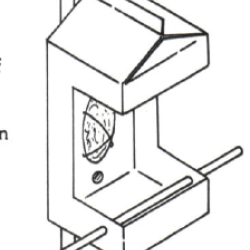Source Institutions
Source Institutions
Add to list Go to activity
Activity link broken? See if it's at the internet archive

In this outdoor activity, learners construct bird feeders and set them up at to investigate bird behavior for one or two weeks. Multiple feeder designs are suggested. Learners are encouraged to observe how different birds approach the feeder, whether any birds bully other birds, what foods visiting birds eat, how often and at what times of day different birds visit, and how birds react to models of other birds on the feeder.
- 1 to 2 hours
- 1 to 4 weeks
- $10 - $20 per group of students
- Ages 6 - 14
- Activity, Model
- English
Quick Guide
Materials List (per group of students)
- 1 birdfeeder made from:
- 1 piece of wood at least 12
- 1 stake 6'x2
- cardboard (or 1 still cardboard box at least 16
- 20 tacks
- large nails
- 1 hammer
- masking tape
- scissors or knife
- 2 jar lids
- 1 assortment of foods: small seeds (parakeet or canary food), large seeds (pigeon food, chick mash), unsalted sunflower seeds, popped popcorn, raisins, suet (beef fat), peanut butter
- 1 plastic sandwich bag
- 1 large grocery bag
- 1 copy of the set of Action Cards (page 5 in PDF)
- 1 copy of the "Eyespot" card (page 6 in PDF)
- 1 copy of the "Bird Model" card (page 7 in PDF)
- 1 Birdfeeder Junk Box containing: thumbtacks, assorted nails, tacks, fishline (4-6 pound test monofilament), colored construction paper, clay, and masking tape
- hammers
- crayons and felt pens
- scissors
- 1 "Basic Birdfeeder" Equipment Card (page 8 in PDF)
Subjects
-
Life Sciences
-
Diversity of Life
- Animals
-
Diversity of Life
-
The Nature of Science
-
The Scientific Process
- Asking Questions
- Conducting Investigations
- Gathering Data
- Communicating Results
-
The Scientific Process
Informal Categories
- Animals
- Arts and Crafts
- Nature and Environment
- Outdoor Activity
Audience
To use this activity, learners need to:
- see
- touch
Learning styles supported:
- Involves teamwork and communication skills
- Involves hands-on or lab activities
Other
This resource is part of:
Access Rights:
- Free access
By:
Rights:
- All rights reserved, The Regents of the University of California, 1979
